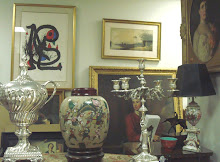[Unless otherwise noted, all photographs by David Schalliol, http://www.davidschalliol.com/photography]
Jessica Savitz: Why do you like to photograph at night?
David Schalliol: There are a variety of personal and aesthetic reasons why I enjoy photographing at night.
On the personal side, I am particularly drawn to photographing very late at night because the city is relatively peaceful.
It can be difficult to stop and explore a place during the day because of the bustle of the community or the traffic in the street. But after midnight or 1am on a weeknight, one can particularly appreciate a different kind of relationship to a place.
Aesthetically, I’m both drawn to the night’s palette and its way of drawing attention to the layers of the city.
While human presence is ubiquitous during the day, it is primarily visible at night because of our intentional efforts to lay claim to place through streetlights, porch lights and other sources of “artificial” light like neon signs, blue light cameras or even trains.
These claims can be for community or for individuals, but they are conscious invasions of the darkness.
JS: You write of Detroit, “Streets take on a patchwork appearance from the hues of private light sources: the bluish whites of fluorescent signs, reds of neon gas and pale yellows of porch lights.”
Do you feel these neighborhood light sources, including the speedy beam of light from the el train and lights billowing up behind fog, serve as complex allegories in your work?
DS: I’ve always been interested in visualizing social phenomena, so I think about many of those elements as reminders (if not symbols) of overarching social structures, whether they are commercial, governmental or community institutions. I emphasize that perspective in my Detroit series, in which I explore Detroit residents’ relationship with municipal institutions by documenting their responses to the gaps of Detroit’s relatively dysfunctional streetlight system.
By focusing on absence and presence of personal and public light sources, I hope to more generally call attention to issues of community engagement in a context of resource deprivation.
JS: Where do you see street photography going?
DS: Given the seeming ubiquity of cheap, small digital cameras and the increasing quality of mobile phone cameras, I think some form of street photography will become the dominant mode of photography – if it already isn’t. As photography has been democratized and simplified by these automatic cameras, an astounding volume of photographs is produced every day. Among these images are certainly typical photographs of friends or places that are important to the photographer, but more of these images are of fleeting moments on the street and the beauty or comedy of ephemera. There is already a formalist backlash to these kinds of images, but I expect street photographs will continue to grow in number (and, in some cases, quality) as people have better access to the means to produce them. What will hopefully emerge is a more complete, personal and democratic depiction of human life.
JS: Joseph Campbell wrote in 1985, “The relationship of myths to cosmology and sociology has got to wait for man to become used to the new world that he is in. The world is different today from what it was fifty years ago. But the inward life of man is exactly the same.” He also wrote, “When you get older, and everyone you’ve known and originally lived for has passed away, the maya myth comes in. But, for young people, the world is something yet to be met and dealt with and loved and learned from and fought with—and so, another mythology” (Campbell 169-70).
I am particularly thinking here of your wondrous photograph from The Chicago Housing Authority’s Plan for Transformation—the young boy in the housing projects surveying the city from above.
Do you ever feel that you are recording with your camera some sorts of promising modern day myths? And how might the role of the photographer tie into this?
DS: Absolutely. Any representation allows viewers to bring their own experiences to settings with which they have little direct experience, offering the opportunity for a wide range of interpretations. Those new interpretations are then integrated into new understandings of the world as it is -- and as it has been. Photography is particularly effective at doing this in part because of its vividness and seemingly easy interpretability. It takes on a special position as a bearer of truth, with photographers creating objects that uniquely facilitate and constrain possible understandings of the world as it is, but also as it could be. As individuals and as a society, we reckon with these depictions of ourselves and assimilate them as we recreate ourselves. The emerging social conception has the potential for tremendous influence.
* * *
In addition to his sociological and photographic activities, David plays an active role on several websites, including his work as Founder and Editor of metroblossom and Managing Editor of Gapers Block.
* * *
We at MIR express our gratitude to David Schalliol for sharing his compelling and masterful photographs and for his eloquent and educational participation in the interviews for the June series.
The staff at MIR Appraisal Services, Inc. seeks to fully understand the arts in their particular cultural contexts and to analyze relationships between various artistic mediums and genres; in this way we can broaden our expertise as art appraisers. We are located just steps from the Art Institute of Chicago and the Chicago Cultural Center; please do give us a ring to set up an appointment for a consultation regarding your most prized works of art.
Interview by Jessica Savitz
Principal Appraiser: Farhad Radfar, ISA AM
307 N. Michigan Avenue, Suite 308
Chicago, IL 60601
(312) 814-8510
Works Cited:
Campbell, Joseph. The Power of Myth. New York: Anchor Books, 1988.











































